Date : March 22, 2022
FPCJ First Online Tour for Foreign Press: Amami-Oshima and Tokunoshima, Natural World Heritage Sites
post date : 2022.03.09
============================================================
FPCJ First Online Tour for Foreign Press
Amami-Oshima and Tokunoshima, Natural World Heritage Sites
A Unique World Woven by People and Nature at One of the
Top 100 Sustainable Tourism Destinations in the World
Time and Date: 13:00–14:45, Tuesday, March 22, 2022 (Japan time)
============================================================
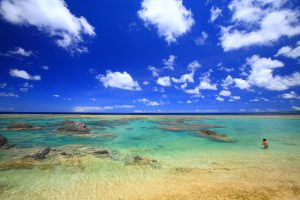
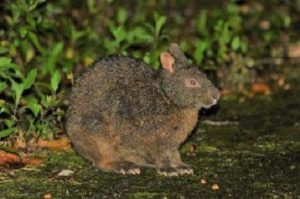
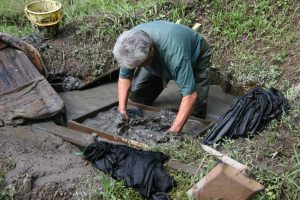
In July 2021, Kagoshima Prefecture’s Amami-Oshima Island and Tokunoshima Island were added to the UNESCO Natural World Heritage List along with Iriomote Island and the northern part of Okinawa Island. Surrounded by ocean, the islands have unique ecosystems and are home to numerous rare species such as the Amami rabbit. This high biodiversity is why they were added to the list.
Continued efforts were necessary to have the islands added to the World Heritage list, including eliminating invasive species in order to help the ecosystem recover. To minimize the environmental burden caused by the growing number of tourists, an ecotour guide certification system was put in place in 2017, and in 2021 Amami-Oshima was selected as one of the top 100 destinations in the world for sustainable tourism by Green Destinations, an international certification body.
A unique culture born out of the blessings of bountiful nature and the wisdom of the forebears is another highlight of this area. Trees and mud naturally found on Amami-Oshima are used in dyeing Oshima tsumugi, a textile specialty of the island, and Amami-Oshima is the only place in the world where this “mud dyeing” is carried out.
This tour will examine the attractions of the World Heritage sites Amami-Oshima and Tokunoshima, interviewing people on the frontlines who are protecting this bountiful nature and the culture that developed there, while also passing it on to future generations and promoting it to people around the world. Participants will also be given Oshima tsumugi masks before the tour, incorporating real elements while experiencing the beauty of one of the top 100 sustainable tourism destinations in the world.
<<Participant Benefits>>
-A mask made using the traditional craft Oshima tsumugi (for foreign press in Japan only)
-Priority in being informed of a possible actual press tour by the Kagoshima Prefectural Visitors Bureau once the COVID-19 pandemic is over
-Contact information for tour subjects, as well as providing video footage and photos which may be used in articles or video news reports
■How to Participate
Please apply using the registration form linked below. We will send you a Zoom URL by email after your participation is confirmed.
https://forms.gle/fR4kzEruUJUqubb7A
■Sponsor
Kagoshima Prefectural Visitors Bureau
■Time and Date
13:00–14:45, Tuesday, March 22, 2022 (Japan time, as are all times listed below)
■Intended audience
Foreign Press
*Embassy representatives, FPCJ supporting members, and other invited guests may also join the event as observers.
■Language
Japanese (with consecutive English interpretation)
■ Participation fee
Free of charge
■Program
13:00 Opening
13:05-13:30 The Ecosystem of the Amami-Oshima and Tokunoshima World Heritage Sties Protected by the Amami Mongoose Busters
Amami Wildlife Conservation Center, Director Shintaro Abe
13:35-14:05 Breaking New Ground for Oshima Tsumugi, the Only Textile in the World Dyed Using Mud
KANAIKOUGEI, Mr. Yukihito Kanai
14:10-14:35 Tokunoshima’s Nature as Shown by an Ecotour Guide, and Sustainable Tourism
Amami Island Group Certified Ecotour Guide, Ms. Kanako Tsune
14:35-14:45 World Heritage Listing During the COVID-19 Pandemic and Initiatives to Attract Tourists
Kagoshima Prefectural Visitors Bureau
14:45 Event ends
■Speakers
①The Ecosystem of the Amami-Oshima and Tokunoshima World Heritage Sties Protected by the Amami Mongoose Busters
Amami Wildlife Conservation Center (Okinawa Amami Nature Conservation Office) Director Shintaro Abe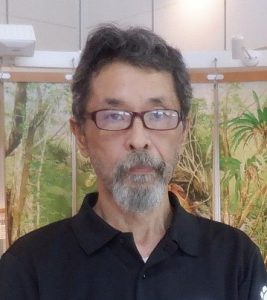
The Amami Wildlife Conservation Center was established by the Ministry of the Environment to protect the wildlife and nature of the Amami Island Group. In addition to keeping track of the population of rare wildlife such as the Amami rabbit and capturing invasive alien species, like the mongoose, which endanger native species, the center also makes videos and displays in order to improve understanding of and interest in wildlife conservation.
Mr. Shintaro Abe, the center’s director, who first became involved in studying mongoose on Amami-Oshima as an NGO member in 1988, has worked on eliminating mongoose on the island, including the mongoose eradication project of the Ministry of the Environment from 2001 and the establishment of the Amami Mongoose Busters in 2005. While there were around 10,000 mongooses on the island at one point, thanks to the efforts of Mr. Abe and his team that population has been significantly reduced. With no mongoose having been captured for 4 years, they have nearly been eradicated. With the decline in the mongoose population, endemic species such as the Amami rabbit have returned to Amami’s forests, helping support the registration on the World Heritage List. Mongooses have driven many species around the world to extinction and are a major problem. If they can be completely exterminated from a large island like Amami-Oshima, it would be the first success of this kind in the world, and could provide valuable information to other important natural environment sites around the world facing similar issues.
⇒Mr. Abe will discuss the nature of Amami and Tokunoshima, efforts to exterminate the mongoose in order to restore Amami to its original state, and issues in simultaneously conserving nature and dealing with an increase in tourists from being included on the World Heritage List.
②Breaking New Ground for Oshima Tsumugi, the Only Textile in the World Dyed Using Mud
KANAIKOUGEI, Mr. Yukihito Kanai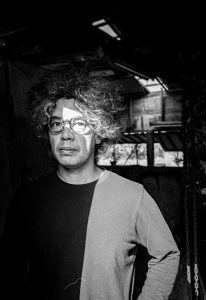
Oshima tsumugi is a type of silk textile originating in Amami-Oshima over 1300 years ago, and is said to be one of the three great textiles of the world along with Persian rugs and French Gobelins tapestries. Its most unique characteristic is a natural dyeing method using mud. After dyeing silk in a solution made from sharinbai, a plant from the Rosaceae family native to the island, the silk is then immersed in natural mud. The chemical reaction between the tannin in the sharinbai and the iron in the mud creates a deep, glossy black dye that does not fade.
Mr. Yukihito Kanai is the colorist of KANAIKOUGEI, a workshop which performs authentic Oshima tsumugi mud-dyeing. He continues to create phenomena by reinterpreting the culture of Amami-Oshima, his home base, and connecting it with the present. He left the island after graduating from high school, but returned at the age of 25 and became enamored with dyeing while helping out with the family business. Mr. Kanai, who says he feels that instead of dyeing the fabric himself he is being allowed to dye it by Amami’s nature, not only carries out traditional Oshima tsumugi dyeing, he has also collaborated with fashion brands including Uniqlo, pioneered new genres by dyeing materials other than fabrics, and has held a mud-dyeing workshop in Europe.
⇒Mr. Kanai will show how dyeing is performed in his workshop, while discussing his feelings on the mud dyeing made possible by Amami’s nature, and his efforts to spread Amami’s dye culture to the rest of Japan and the world.
③Tokunoshima’s Nature as Shown by an Ecotour Guide, and Sustainable Tourism
Amami Island Group Certified Ecotour Guide, Ms. Kanako Tsune
As tourists to the Amami Islands were expected to increase after being added to the World Heritage List, the ecotour guide certification system was established in 2017 with the goal of simultaneously conserving nature and promoting sustainable tourism. On Tokunoshima, being accompanied by a certified ecotour guide has been a requirement since April 2019 for locations such as the 2.3 kilometer Hagedake forest path in the south of the island, the area registered on the World Heritage List.
Ms. Kanako Tsune, a member of the Tokunoshima Ecotour Guide Liaison Council, is one of 15 certified ecotour guides on Tokunoshima. Ms. Tsune, who was born and raised on Tokunoshima, worked at the Okinawa Churaumi Aquarium as a guide after graduating university before returning to Tokunoshima. She now runs the website Tabitomo Tokunoshima along with Ms. Cathy Cheung, who moved to Tokunoshima from Hong Kong, providing various tours to see the plants and animals in the forests or visiting the villages, as well as providing unique Tokunoshima experiences together with locals (for example, coffee picking and tasting, the island's traditional folk tea culture of furicha, or a tour of a shochu distillery) .
⇒Ms. Tsune and Ms. Cheung will demonstrate part of their ecotour course, while discussing the appeal of Tokunoshima and the ecotour guide certification system.
■Contact Information
FPCJ Strategic Communications Division, Junya Sugawara (Mr.)
(Tel.: 03-3501-5251, Email: sc@fpcjpn.or.jp)



